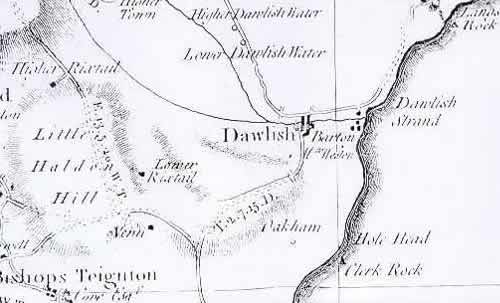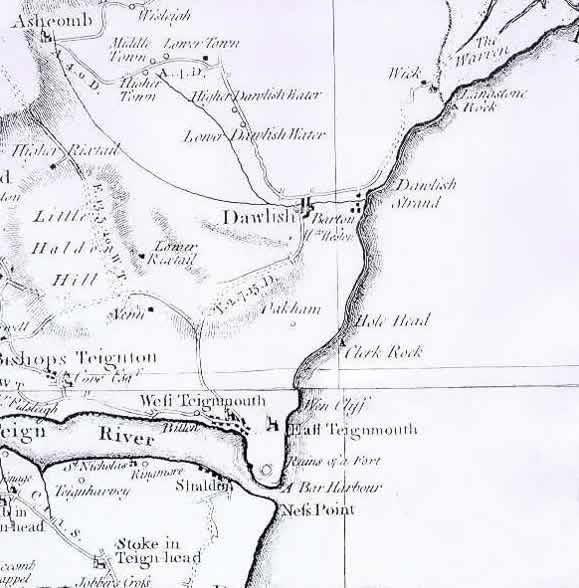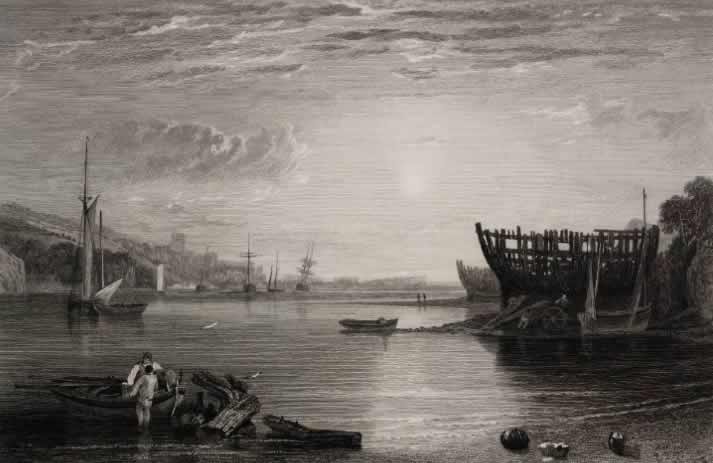24-25 March 1818: Nettles, Isabella, & Hunt’s Affectatious Title
Teignmouth, Devon


Keats writes to his good friend, the sensible and witty James Rice. Keats has been in Teignmouth for over two weeks; he stays for about two months. He joins his younger brother, Tom, who has clear signs of consumption. Keats’s hope is to put the final touches (corrections and a preface) on Endymion, the long poem on which he has been working fairly steadily for almost a year.
In the letter to Rice, Keats expresses, a little
playfully, a life-theme—a theory of Nettles.
He posits that how happy
one’s
thoughts might be if they could remain settled and content, with feelings quiet and
pleasant.
But, he notes, Alas! This never can be.
Mutability, complexity, and
darker, uncertain elements cannot be kept in check by any philosophy. At his most
penetrating
moments in his poetry-to-come, these elements will combine in an acceptance of uncertainty
and
sorrow through a capable imagination, one that equally embraces despondency and hope,
joy and
sorrow.
After waggishly wondering if, in a world of non-varying atoms, the smart matter of
Milton’s head might find some room in someone else’s
empty head, he expresses hope for the health of his ill friend, John Hamilton Reynolds, and he notes Tom’s health, as well: Oh! for a day and all well!
And
then, to perhaps raise spirits, Keats ends with a lusty doggerel based on visiting
a fair at
the town of Dawlish, Over the hill and over the
dale.
The next day, 25 March, Keats writes an offhand epistolary poem to Reynolds—Dear Reynolds, as last night I lay in
bed. The poem rambles forward by describing some recent disjointed dreams and
what such things might mean. By the poem’s end, he is unsettled about the tooth and
claw of
nature and the troubling moods of one’s mind
(100-6). But most interestingly, in
between these, he accepts that reason and ethics can never be settled
or
knowable—they will tease us out of thought
(77); our happiness is sadly flawed
because we see beyond our bourne— / It forces us in summer skies to mourn: / It spoils the
singing of the nightingale.
These lines, if only in passing, anticipate the region of
thought and source of great poetry that Keats comes to explore in his best work; they
especially anticipate his 1819 odes on the urn and the nightingale, where the human
condition
and time’s powers encounter each other through an unfaltering imagination. Even the
style of
these lines, in their simple, uncluttered, calm elegance, anticipate a voice that
Keats will,
for example, summon in his remarkable ode To Autumn, written in the fall of 1819.
The letter to Reynolds also has a brief,
disconnected but charged comment about his friend and former mentor, Leigh Hunt, who, back in October 1816, more or less launches Keats’s
poetic career while introducing him into a network of writers, poets, publishers,
critics, and
artists. Keats writes, What affectation in Hunt’s title—‘Foliage’!
The reference is to a collection of Hunt’s poetry. That Keats points
to Hunt’s poetic pretensions is yet another sign of his desire to move away from Hunt’s
influence and particular poetic style. Keats seems to feel some contempt for Hunt’s
mannered
poetic posturing. Keats, we know, has for one of his Axioms
that poetry must come
naturally (rather than display artificiality) or better not come at all
(27 Feb). Keats
clearly trusts Reynolds to keep these comments private, since Reynold knows Hunt very
well,
and Keats is still in contact with Hunt, having met and dined with him at least a
couple of
times the previous month. Worth keeping in mind is that only a year-and-a-half earlier
that
Keats is a great fan of Hunt as a poet. His comment mocking Hunt’s title is a measure
of how
far—and in what direction—Keats has come.

Among shorter and largely inconsequential poetry, Keats finishes Isabella. Based on Boccaccio’s tale and likely set off by William Hazlitt’s 3 February 1818 lecture, Keats
begins it in February and completes it by 27 April. The poem’s awkward combination
of
sentimentality, mild lewdness, and idealization is in some ways a sideways step in
Keats’s
poetic progress, inasmuch as its ostensible lack of purpose recalls earlier work.
Keats thus
later considers the poem mawkish
(19 Sept 1819), weak, simple, and exhibiting too much
inexperience—and altogether too smokeable
(22 Sept 1819), meaning that he considered
the poem easily open to mockery. He did not want it published, but it ends up in his
1820
volume. (Keats also calls his long poem Endymion mawkish
in its style and
ambition.)
Four things are notable in this period at Teignmouth: first, Keats finally able to
put Endymion and its shortcomings behind him; second, clear signs that
he wants to move forward through application, study, and thought
(24 April); third, a
deliberate wrestling with the poetic dimensions of Milton and Wordsworth relative to
his own poetic character and goals; and fourth, and as an extension of this, further
work
toward a composed stance that will, in his poetry, allow him to reflect deeper regions
of
wisdom, knowledge, and feeling—that Burden of the Mystery
he refers to twice (on 3 May)
in drawing upon Wordsworth’s phrase from Tintern Abbey (38).


